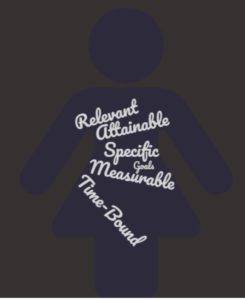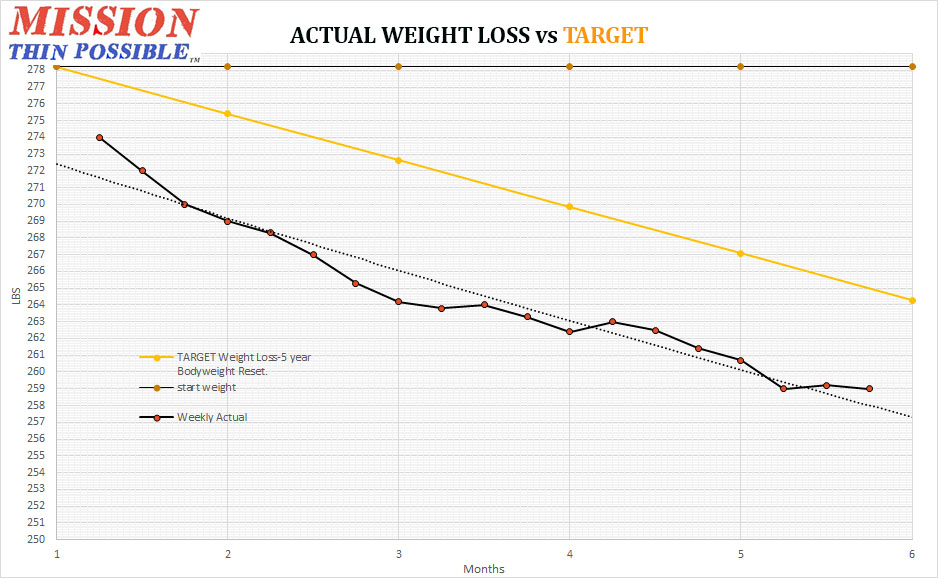Human physiology evolved over millions of years on a diet containing very little sugar and no refined carbohydrates. Sugar cane was originally a fodder crop used to fatten pigs. Sugar gained popularity as a “spice” in the 1600’s when it was introduced into the Caribbean driving the slave trade. Sugar has never been a benefit to our modern world. Here in our 21st century our society is in the grip of a health crisis directly linked to the addictive effects of refined sugar and fats, comparable to the health scourges of tobacco and alcohol. Sugar causes dopamine release in our brains similar symptoms to drug addictions. Sugar is a leading contributor to Obesity and is highly addictive and the cause of poor food choices like soda pop, candy and chocolate,but we do love our sugar!Read more
- May 21, 2018
- Stuart Gogarty
- Uncategorized
- 0 comments
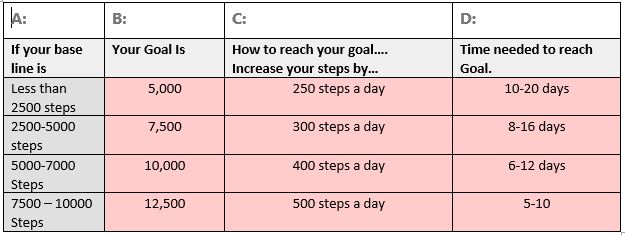
Why Walk?
Exercising hard is not necessary nor is it an effective tool for permanent weight loss.
Low to moderate intensity exercise however has all the benefits that are needed to achieve living longer.
Health professionals all agree that including exercise as part of a “lifestyle change weight loss program” gives fives times the probability of success.
Walking was the exercise program adopted by over 90% of people who have ever successfully achieved permanent weight loss. Walking can be added by almost everyone to your own schedule instead of changing your schedule to fit in a gym,cardio, or dance class program schedule. You can adopt as many small sessions as you want broken up throughout the day, before work, at lunchtime, after work, alone or walk with friends, family,children, and pets. Walking is the most readily available and least costly program that anyone can use to achieve a permanent life change.
Getting Started.
• Wear comfortable walking shoes, with good fit and low heel.
• Choose a safe, well lit route especially if walking alone. (Ideally always walk with an exercise buddy).
Motivation.
Most people like to challenge themselves. Using a pedometer to track your daily step count will motivate you to walk further and you will see your progress.
Setting yourself a step goal for each day will push you to do a little bit more until you eventually hit your step goal. Walk with friends and plan scheduled walking dates to encourage you to walk more often and regularly.
How To Reach 10,000 Steps a Day?
10,000 steps a day is a good daily target to set as a goal. If you have a desk job 10,000 steps may seem daunting. A daily step count target can start at less than 2,000 steps.
Follow this guide to steadily build up your step count.
•Step 1: Determine how many steps you take in a normal day by wearing a pedometer for 3 days.
•Step 2: Calculate your base line, divide total number of steps by the number of days measured.
•Step 3: Read your first goal from Col B. that corresponds to your starting baseline.
Cols C and D give recommendations for reasonable rates of step increase and time to increase.
•Step 4: Circle the number of steps on the Step Table closest to your ultimate goal, 10,000 for most people.
•Step 5: After you reach your first goal set that number of steps as a new baseline and repeat the cycle.
If you find you do not have time to add more steps focus on going faster and or including more hills.
Pre-emptive Actions
These Pre-emptive action suggestions will help you increase your daily step count.
•Put on your pedometer immediately you get dressed in the morning – every step counts.
•Have a quick walk before work, use the time to plan out your day.
•Check your step count during the day, do not leave a large amount to make up after work.
•Get up and walk periodically during the day. Plan to have half your days total done by 3 pm.
•Wherever you are going, take the long way round and use the stairs!
•When grocery shopping walk around every aisle.
•Make a walking date with a friend instead of calling them on the phone, window shopping will easily add 2000 steps to your step count .
Homework
Buy a pedometer if you do not have one.
Start your 10,000 steps a day walking target.
Use the guide above to increase your step count.
Call a buddy and invite them to walk with you! Enjoy the walk.
- May 14, 2018
- Marie
- Uncategorized
- 0 comments
To lose weight we must achieve a slight negative energy balance. We must consume a little less fuel (food) , than we burn to run our body’s systems and perform physical activity.
One major reason for weight gain in our modern society is that portion size over time has been distorted. Read more
- May 7, 2018
- Stuart Gogarty
- Uncategorized
- 0 comments
Why is goal setting hard?
We celebrate exceptional results people have achieved. This is what receives all the publicity in our world. The result is that some of us tend to always see success only if we ourselves are doing the same. We tend to aim high with our goals. Later we beat ourselves up for not hitting them when we fail, or we can excuse ourselves because we set an unrealistic goal.
Some of us set goals for ourselves that are so low that achieving them is guaranteed and safe. These require little effort, and usually result in little improvement or change. Neither approach is very smart and neither approach leads to success.
Real success comes when we set “smart goals” for ourselves. These goals push us to achieve realistically achievable irreversible small positive steps to the new healthier lifestyle that we are seeking.
“Smart”Goals.
MTP makes goal setting easy for everyone by giving everyone some simple clearly defined goal to meet as a homework each week.Read more
- April 22, 2018
- Stuart Gogarty
- Uncategorized
- 0 comments
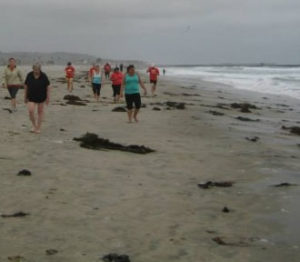
Why exercise?
When I exercise I get hungrier afterwards which makes me eat more. I know I must satisfy my hunger and replace the calories I have burned until my blood sugar gets back up to normal. So, why should I exercise if it makes me eat more when I want to lose weight ?
Research has shown that people adopting a scheduled exercise program as part of their weight loss program are 5 times more likely to succeed and achieve a weight loss goal. Further, maintaining exercise as part of a life change program supports making any weight loss permanent. If we are overweight usually we do need to MOVE MORE.
Body Atrophy
If we do not exercise our body muscles atrophy. They become less functional and weaker,worst case, not capable of meeting our daily activity demands and supporting our everyday life activities. As we age we lose muscle mass anyway and have lower strength. We accelerate this if we do not keep active.
It creeps up on us without our knowing until the day we realize we are no longer fit. Eventually basic functions like getting up off the floor and getting in and out of the car, carrying our shopping, carrying a laundry basket can start to be affected. Worse still we may start to injure ourselves doing any of our heavier load daily tasks.
We need to use our muscles regularly to avoid this and if possible work our muscles harder than just at our daily norm.
It is never too late to halt or reverse this trend. We all need to take stock of our situation and adopt and implement a plan to “Move More” while we can. We do not have to run marathons or pump iron.
Combined Exercise and Weight Loss
As we lose weight we will regain functional capability. This is amplified when combined with improvement in our strength, flexibility and endurance produced by exercise. As our level of activity increases, our physical fitness normally will increase with it and we find we feel better about ourselves.
We get the feeling of improved health. If not then we should see a doctor and get checked out just in case.
You will enjoy your day more and deal with life challenges and stress more easily, have more freedom of movement, have more stamina to do much more than just go to work and do the home chores as you get in better physical shape.
How to enjoy exercise
- Choose an exercise program featuring exercise that suits you preferably with an exercise “buddy”.
2. Make it a habit, exercise 30 – 40 minutes at least 3 times per week, daily if possible.
3. Give yourself the time to create a regular routine and exercise around the same time each day.
4. The key is to build exercise into your life style so that it is not disruptive and chose times of the day that work best for you.
5. If you miss a day don’t worry about it. Just get back at it the next day.
Homework
If you are not doing it already, start a daily exercise program (or at least 30 minutes 3 times a week.)
A daily walk is easy, can be done without equipment, is free and has been used as the go to exercise used by over 85% of all people who achieve permanent weight loss.
- April 17, 2018
- Stuart Gogarty
- Uncategorized
- 0 comments
Below is a list of steps adopted taken so far in your life change journey. Check off your progress and see how you are doing in adopting life change step by step.
Posting such a list and checking off progress is a simple tool we can all use to keep ourselves motivated. Re read a particular talk if you need to refresh your memory.
| # | Talk | Homework | Adopted
YES/NO |
Needs work
YES/NO |
| 1. | Methods for Change | Use feed forward thinking and pre-emptive actions to change your behaviors. | ||
| 2. | Portion control | Use a 9” salad plate at all main meals | ||
| 3. | Sugar Sugar | Eliminate sugar drinks and processed foods. | ||
| 4. | Taking hunger out of weight loss | Achieve your low rate weight loss target each week through small changes in your diet. | ||
| 5. | Fats | Reduce fats in your diet . | ||
| 6. | Goal Setting | Adopt any Homework life changes not yet adopted. | ||
| 7. | Daily Weighing | Weigh yourself daily until you achieve steady weight loss …then as often as you need to keep losing. | ||
| 8. | 10,000 steps | Walk up to 10,000 steps a day, how close did you get? | ||
| 9. | Changing Your Shopping Habits | Make and plan your shopping list each week and eliminate highly processed foods.
|
||
| 10. | Triggers and Food Cravings | Identify your food craving triggers and replace them through feedforward thinking. | ||
| 11. | Water | Drink a cup of water before meals | ||
| 12. | Low Glycemic Index | Change high Glycemic index foods for low glycemic index foods. ( less processed foods- vegetables, meat, fish, multigrain rather than white bread) | ||
| 13. | Team Of Friends | How many friends have you made. | ||
| 14. | Importance Of enough Sleep | Plan a bedtime and wake up time and stick to it. Plan for 8 hours of sleep. | ||
| 15. | Play | Add playtime to your to-do list each week | ||
| 16. | Eat More Vegetables | Have one meatless day a week, pre-prepare vegetables and have them ready for every meal | ||
| 17. | Intend To Exercise | Complete 20 mins exercise a day |
- April 9, 2018
- Marie
- Uncategorized
- 0 comments
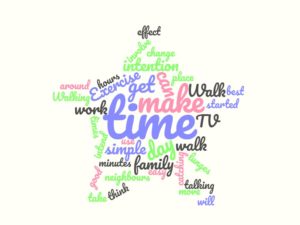
I started writing this blog as “Making time for exercise”, but stalled with the thought that if we do not have a true “intention” to exercise, all of our plans and wish lists fall by the wayside because we will not follow through on them. I questioned myself how do I do it?
To set in my mind a true intention to exercise, I must mentally pre-program myself, so I see it happening and set it in my mind and commit myself to it. Once I have done that my next step is to plan and decide on the time and place and the how and record it, write it down, text someone my intent.
Better still I invite a buddy along as an extra driving force as insurance.
Exercising for 20 minutes a day will add to your longevity. Adding 20 minutes of light exercise a day adds up to 2+ hours of exercise a week this has benefits not only for burning calories but in increasing our body’s overall health and agility.
Plan time for exercise and make it a regular daily routine habit is even better. It helps to exercise around the same time each day. The key is to build exercise into your life style so that it is not disruptive. Chose times of the day that work best for you. Is it early morning before work or just before supper? or while watching TV? Use those 5-minute advertising sections to put in some body strengthening exercises like squats and lunges. My father, now 93 years old, swears by the arm curls with a couple of cans of beans he has practiced over the years since retirement while watching T.V. as a major reason for his good health.
Start with something simple, Walking is the simplest exercise, it costs nothing to get started. It is easy, safe and can be done anywhere and anytime. Walk around the block in your neighborhood, around the local parks, meet the neighbors. Walk to the corner store instead of driving, walk in the sunlight and get the bonus effect of melatonin stimulation to aid in better quality sleep.
Even at home you can move more through some simple changes to regular household duties, get creative and involve the whole family.
- Do housework to fast music, get the heart rate up, dance for 60 seconds in between chores- feeling a little crazy is good for the soul! (Vacuuming to the sound of the rolling stones cranked up is a great stress reliever.)
- Work in the garden, mow the grass. Rake leaves, prune, dig and pick up trash.
- Stand up while talking on the telephone and exercise on the spot –try high leg lifts , high knee bends or lunges.
- Walk the dog or borrow the neighbors’ dog and take it for a walk.
- Plan family time for exercise involve the kids or other family members, make it a friendly playful competition- volleyball before dinner or simple catching a ball.
- if you are lucky enough to have home exercise equipment intend to use it, make yourself a schedule.
If you think you don’t have the time to take a walk, think about how much time you spend after work on the following activities- watching TV, binge watching TV shows on Netflix, catching up on your social media accounts, talking about how tired you are.
Can you change some of the couch potato time into exercise time? Make the change today, intend to move more, then actually do it!
Homework:
Plan and intend to complete 20 minutes exercise in your daily routine.
Keep track of your activity for one week and let us know how you did.
- April 2, 2018
- Marie
- Uncategorized
- 0 comments
Eat more Vegetables
It can be challenging to eat more vegetables than the one serving we have with our main meal of the day. If we are eating to meet dietary recommendations, we have to find ways to get up to 5 servings of vegetables into our diet every day. There are many ways to do this, but it takes preparation and planning.
We have already made the commitment to eating foods that are healthier and have more fiber, eating vegetables is the best way to achieve this. It comes down to planning and pre-preparation.
Grocery shopping should be done on a day when you have an extra half hour to wash and prepare the vegetables that you have bought. Having a container of pre-washed broccoli, carrots, celery, cauliflower, cucumber, peppers and tomatoes in the refrigerator gives you so many more options to add vegetables to every meal. You are ready to get creative like adding chopped vegetables to your pasta sauces, if you get objections from family members because they can see the vegetables, use a blender and blitz the vegetable before you add them so that they blend into the sauce.
Make soups. A truly rich vegetable soup can use up all the odds and ends left over at the end of the week with the addition of some shredded cabbage or fresh herbs. If you feel you do not have time to make soup, again blitz the vegetable first in a blender and the soup will cook much quicker. Add beans like black beans or chick peas for added fiber.
Serve vegetables and dip as a starter before every meal, stick to low calorie dressings or hummus or make them yourself e.g.- parmesan cheese, pressed garlic and lite mayonnaise. Find the flavours that suit your family.
Have one day a week which is a meatless main meal such as a veggie chili using 3 types of beans such as kidney beans, black beans and chick peas or a Veggie lasagna made with auberge and tomatoes.
Get creative with baking – substitute shredded vegetables for fruit in muffins, use whole grain flour and shredded carrot in cake.
Fresh Vegetables are always the best option but seasonal prices may affect your choices. When vegetable prices are high consider frozen vegetables. These are convenient and can be quickly heated up in the microwave.
The health benefits of eating higher fiber food is the lowering of blood pressure, lowering cholesterol and helping to avoid constipation and inflammation in the digestive tract.
Homework:
Try a new meatless dish this week that uses more than one vegetable
Pre-prepare vegetables in your refrigerator and add them to your packed lunch and serve them before every meal.
- March 22, 2018
- Stuart Gogarty
- Uncategorized
- 0 comments
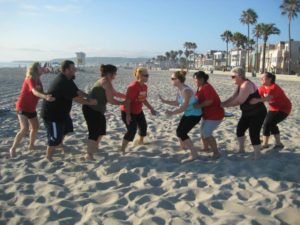
Game play can trigger the release of endorphins, the body’s natural feel-good brain chemicals. Endorphins promote an overall sense of well-being and can even temporarily relieve pain. Playing fun activities that challenge the brain can help prevent memory problems and improve brain function. The social interaction of playing with family and friends can help ward off stress and depression.
Longevity
Recently research has been linking play with longevity. Taking the time to replenish yourself through play is one of the best things you can do. Playing games:
- keeps you functional when under stress
- refreshes your mind and body
- encourages teamwork
- increases energy and prevents burnout
- triggers creativity and innovation
- helps you see problems in new ways
Participating in Mission Thin Possible encourages you to play regularly every week at least once and is usually looked forward to by team members. It’s possible that you are self-conscious and concerned about how you’ll look and sound to others when you attempt to play games if you have not regularly participated in physical games. Fearing rejection, embarrassment or ridicule when attempting to participate is an understandable fear especially if we are overweight. We design our games to encourage participation for all with more emphasis on fun than serious competition.
Sharing laughter and fun fosters empathy, compassion, and trust. Our games can help you loosen up in stressful times, break the ice with strangers, make new friends, and form new lasting relationships.
Keep you feeling young and energetic. In the words of George Bernard Shaw, “We don’t stop playing because we grow old; we grow old because we stop playing.” Playing boosts your vitality and even improves your resistance to disease, helping you feel confident and your best.
Play is not just essential for kids; it is an important source of relaxation and stimulation for adults. Playing is a fun way to fuel your imagination, creativity, problem-solving abilities, and emotional well-being. Adult play is a time to forget about work and commitments. By participating in non-competitive game playing you can play with the joyful abandon of your childhood, and reap oodles of health benefits throughout life.
Games that are multi dimensional provide most stimulation. They can stimulate your imagination, helping you to maintain your adaption and problem solving skills.
Homework
Start thinking today and everyday how you can add “playtime” to your to-do list.
- March 12, 2018
- Stuart Gogarty
- Uncategorized
- 0 comments
Every member of MTP who has been attending our program regularly has now achieved their slow steady weight loss or at minimum turned previous weight gain into a steady loss trend.
We can now reset your target curves to better provide you a clear picture for your continuation phase.
It is not time to let up now.
What do you think you have done in your lifestyle that had the most effect in producing this result ?
Homework
Take time to reflect on what you have been doing.
Have you committed all you can to changing your lifestyle to live healthier and live longer.
Have you done what you can to interact with and spread the benefits of your new lifestyle.
What can you do to achieve more.
Come back next week and tell us what more you have changed.

